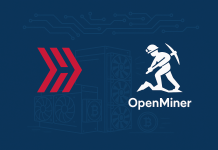[ad_1]
The famed Bitcoin mining industry boasted of record revenues in the first half of 2018, surpassing all of 2017. However, research from Diar shows the network’s increased hashing rate meant mining firms paying retail electricity prices faced a net loss for the first time in September 2018.
Big on Paper, Not on Fiat
The extended bear market this year has led to several cryptocurrencies go below 50 percent of their value compared to the beginning of 2018. $583 billion has left the crypto-market this year, bringing the industry’s valuation down to $217 billion from a high of $800 billion earlier.

Bitcoin’s price remains 40 percent higher than September last year when it traded at an average of $3,600, and the Coinbase reward of 54,000 BTC per month ($354 million) remains open for miners. Miners have earned over $4.7 billion until Q3 this year, with most of the profits going to Chinese entities due to their hashing rate dominance.
As per research, mining remained profitable for companies situated in miner-friendly regions with cold climates and cheap electricity. However, for small mining businesses and corporations paying retail electricity prices, the increase in computing power for maintaining the Bitcoin network meant overall losses.
China’s Bitcoin Mining Relevance
Much of China’s mining landscape benefits from its $0.04 kW/h wholesale price, with the amount approximately double for retail customers. Despite its reluctance towards cryptocurrency businesses, China remains one of the best economies in the world to set up a mining farm in, even on a retail scale. But, property rent, equipment, salaries, and other overheads, can presumably push mining businesses in the red.
Such expenses have made Bitcoin miners a feature of billion-dollar enterprises who can stomach periodic losses and invest into building mining farms across the world.

Meanwhile, Beijing-based Bitmain is moving away from a mining-specific model to focussing on its manufacturing businesses ahead of its touted $3 billion IPO on the Hong Kong Stock Exchange later this year. The company owns two of the world’s largest mining pools, AntPool and BTC.com, which together command 42 percent of Bitcoin’s hash power.
However, rising costs and low profits mean Bitmain displays its hardware prowess as a critical indicator of strong finances before prospective IPO investors.
About 95 percent of Bitmain’s revenues in 2018 came from the sale of mining rigs. Of this figure, according to IPO papers, the firm sold 51.8 percent to international clients – further estimating it corners 75 percent of the world’s mining rig market.
Bitmain and Network Dominance
Keeping Bitmain’s dominance on the Bitcoin network in mind, the company must keep mining profitable for retailers–controlling its hashing power at all times and shifting operations between its Chinese and U.S. units to ensure profitability.
The company runs 11 mining units in China, accounting for 6 percent of Bitcoin’s hashing power, and has three farms coming up in the U.S. at the start of 2019.
For now, mining a game of the rich and is unlikely to provide profits to retail investors should the market continue to grow at the same rate. However, a lot of room is still left to grow, and until mining yields profitability for corporations, the industry is slated to stay.
Cover Photo by Pixabay on Pexels
Disclaimer: Our writers’ opinions are solely their own and do not reflect the opinion of CryptoSlate. None of the information you read on CryptoSlate should be taken as investment advice, nor does CryptoSlate endorse any project that may be mentioned or linked to in this article. Buying and trading cryptocurrencies should be considered a high-risk activity. Please do your own due diligence before taking any action related to content within this article. Finally, CryptoSlate takes no responsibility should you lose money trading cryptocurrencies.
Did you like this article? Join us.
Get blockchain news and crypto insights.
http://platform.twitter.com/widgets.js
[ad_2]
Source link




